
This particular test airframe is sporting 16 Hellfire missiles (it's maximum compliment) and an orange air data probe on it's nose. A nose which is rounded in shape due to missing sensor equipment.
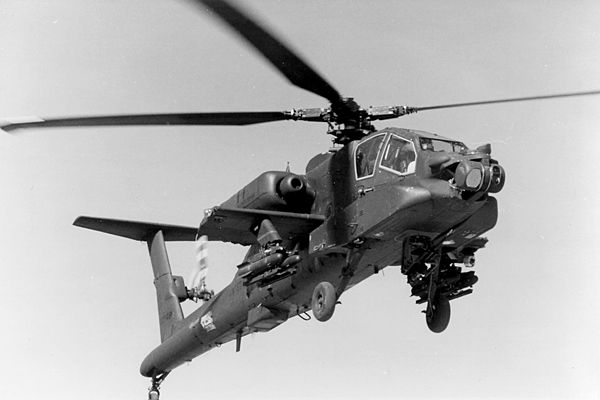

This particular test airframe is sporting 16 Hellfire missiles (it's maximum compliment) and an orange air data probe on it's nose. A nose which is rounded in shape due to missing sensor equipment.
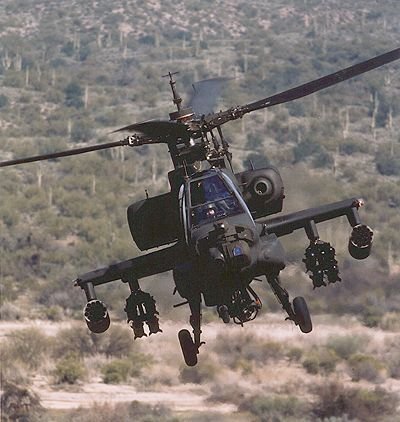
At last, the final configuration. Carrying it's normal load of 8 Hellfires and 2 rocket pods.
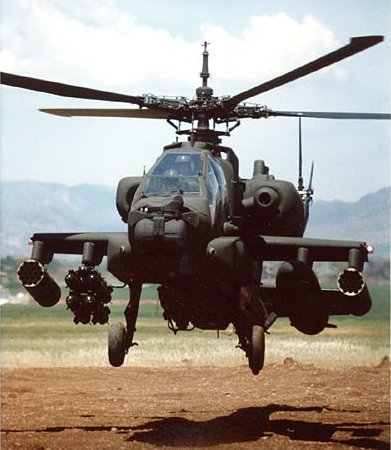
On this mission, 4 of the Hellfire missiles have been replaced by an external fuel tank. Notice how the sensors on the nose have been swiveled round to protect them during the long flight. You can just about make out the new, lower position for the tail.
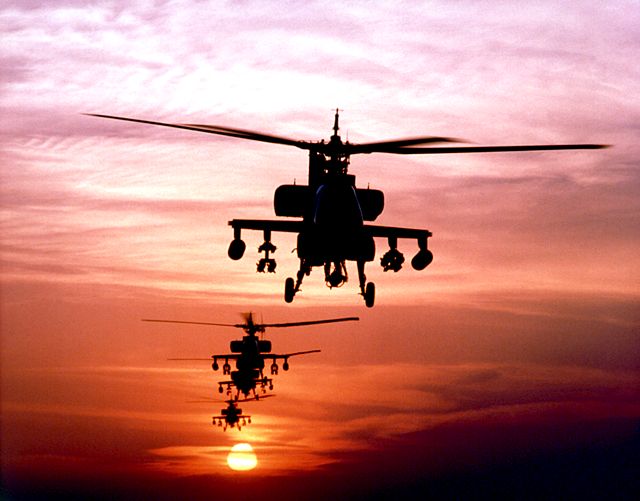
The Apache is the only helicopter in the western world capable of flying operations in darkness and bad weather, thanks to it's infra red cameras and laser targeting systems.
In 1989, Apaches saw combat during the U.S. military action in Panama, where many of their missions were conducted at night.
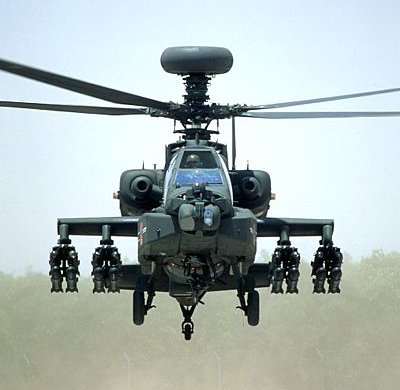
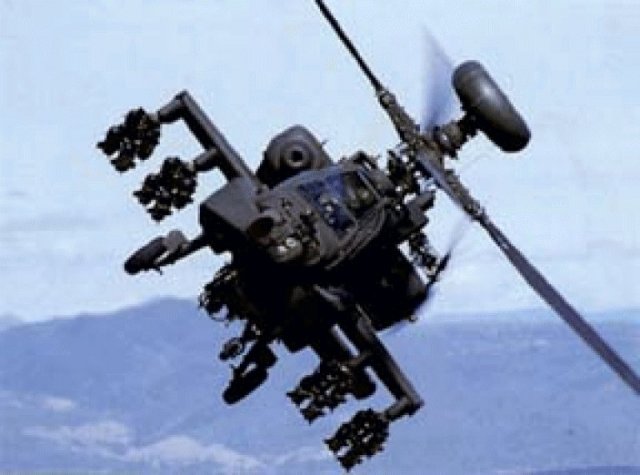
A Longbow Apache being put through it's paces in a high G turn. The Apache is an agile helicopter and capable of a surprisingly fast roll rate, especially for such a heavy helicopter.